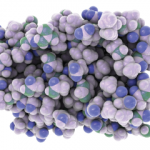There is a general awareness that type 1 interferon (IFN) contributes to disease pathogenesis, at least in a subset of lupus patients.6 Genes that lie within the interferon pathway are risk factors for SLE.7 Approximately 50% of patients display a gene expression profile in peripheral blood mononuclear cells characterized by upregulation of several IFN-inducible genes (interferon signature). Recently, Crow and colleagues have shown that approximately 50% of SLE patients have high levels of serum type 1 IFN, and 20% of their unaffected first-degree relatives also display this phenotype.8 Because high serum levels of type 1 IFN cluster in families, it may be a marker of an at-risk family. There is currently no way to estimate the individual risk to family members with any precision.
Trial Information
SisSLE Research Study
The Feinstein Institute for Medical Research, Manhasset, NY
ClinicalTrials.gov ID: NCT01076101
Phone: 1-877-698-9467
E-mail: [email protected]
www.sissle.org
The SisSLE Study
The underlying hypothesis of our research, known as the Sisters of Women with Systemic Lupus Erythematosus (SisSLE) study, is that an algorithm based on genetics, serology, serum cytokines, Epstein-Barr virus exposure, vitamin D level, chemokines, and peripheral blood gene expression profile can be developed to assess an individual’s risk of developing lupus. By longitudinally following individuals at increased risk of developing SLE, it should also be possible to discern distinct patterns of disease progression; these patterns will reflect different pathways of immune dysregulation and will suggest different therapeutic targets in different cohorts of patients. Thus, this study should increase our understanding of the development of lupus and should begin the process of developing customized prevention and therapy. The study is currently enrolling female lupus patients and their unaffected sisters; the sisters will be followed for up to seven years and monitored for the development of clinical and serologic disease. Individuals will be enrolled throughout the United States and rheumatologists throughout the country are invited to help recruit their patients into this important study. [Editor’s note: “Sisters Volunteer for Study to Find Answers” on p. 25 interviews two sisters who enrolled in SisSLE to hear why this trial is important to them.]
This study will collect DNA from the unaffected sisters and the sister with SLE. Specimens of serum and cells from sisters of patients with SLE will also be collected annually to establish the prevalence and incidence of lupus related phenotypes (i.e., autoantibodies and altered gene expression) in the absence of clinical lupus, in these relatives. Potential environmental triggers, such as vitamin D levels, will also be analyzed. The sisters will be questioned biannually about the development of symptoms that might indicate the evolution into clinical disease. While the overwhelming majority of the sisters will not develop SLE, some of these sisters will progress. The experimental approach is based on the assumption that the unaffected sisters of individuals with an onset of SLE before age 35 years are likely to be enriched for lupus genetic risk alleles, and therefore these individuals will be most informative for longitudinal follow-up in order to accomplish the goals of the study. This study is a unique opportunity to investigate the genes, gene expression, and the serologic progression in unaffected sisters of SLE patients and identify those factors that predict for or protect against the development of clinical SLE.


